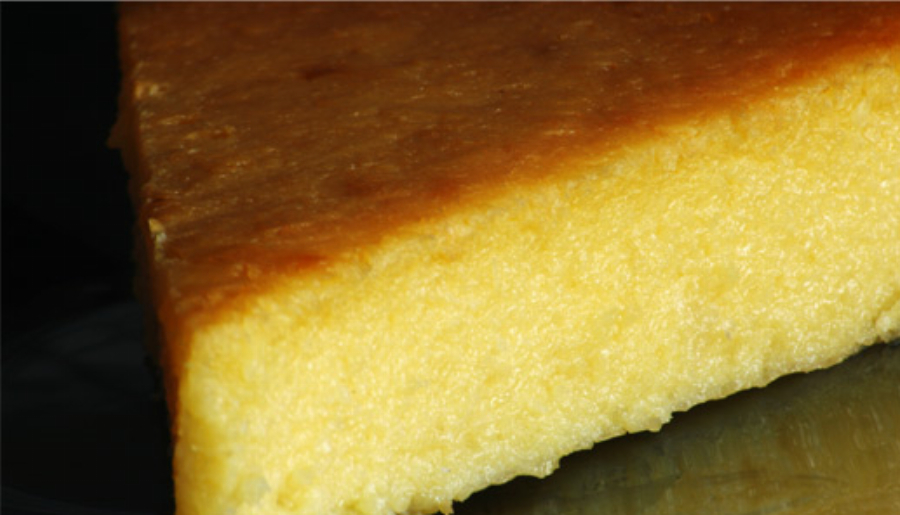Bánh khoai mì nướng, literally baked cassava (or manioc) cake in Vietnamese, is a sticky, sweet cake. The cassava provides the starch, the coconut milk provides the fat, and condensed milk is used as a sweetener. It’s unlike any Western dessert you’ve ever tried.
Cassava is a starchy tuberous root that is widely used in South America, Africa and Asia. The flour made from the roots is called tapioca.
1. Info for Cassava Coconut Vietnamese Cake (Banh Khoai Mi)
- Cook Time: 35 mins
- Total Time: 1 hr 10 mins
- Servings: 6
- Calories: 176
2. Ingredients for Cassava Coconut Vietnamese Cake (Banh Khoai Mi)
- 6 cups Cassava (Manioc), shredded, tightly packed (650g)
- 3/4 cup split mung beans, dried
- 1 1/3 cup coconut milk
- 1 Tbs canola oil
- 1 14-oz can condensed milk
- 2 egg yolks (optional)
- 2 Tbs sugar
- 1 tsp vanilla extract
- 1 Tbs butter, at room temperature
3. Directions:
- In a bowl wash the mung beans thoroughly. Pick out and discard any bad-shaped beans and little stones, then soak them for at least 3 hours before cooking. It’s best to let the beans soak overnight.
- Preheat the oven to 350°F.
- Place the mung beans in a sauce pan, barely cover with water and bring to a boil, then lower to medium-low heat and cook for 30 minutes. The beans should be soft and tender. Make a paste using either a mortar and pestle or a mixer. Set aside.
- In a large bowl, whisk the egg yolks with the sugar until you get a pale yellow foam. If you’re not using the egg yolks, just mix the sugar, vanilla extract, shredded cassava, the condensed and coconut milks, the pureed mung beans and oil. The mixture should be homogenous like a thick cake batter.
- Coat the sides of 2 non-stick round cake pans with a thin layer of butter. Place a disk of wax paper in the bottom of the pan. Pour the cake mixture into the greased pans. Even the batter with a spatula and by gently lifting and dropping the baking pan several times.
- Bake for about 10 minutes at 350°F, then lower the heat to 300°F and cook for another 15-20 minutes.
- The edges of the cake should be slightly golden and dry. To test the doneness of the cake, poke with a toothpick. The toothpick should come out grainy, but not ”liquid-y” at all.
- Remove the cake from the pan, place it on the serving dish and let it cool for at least 10 minutes.
- Voilà !

